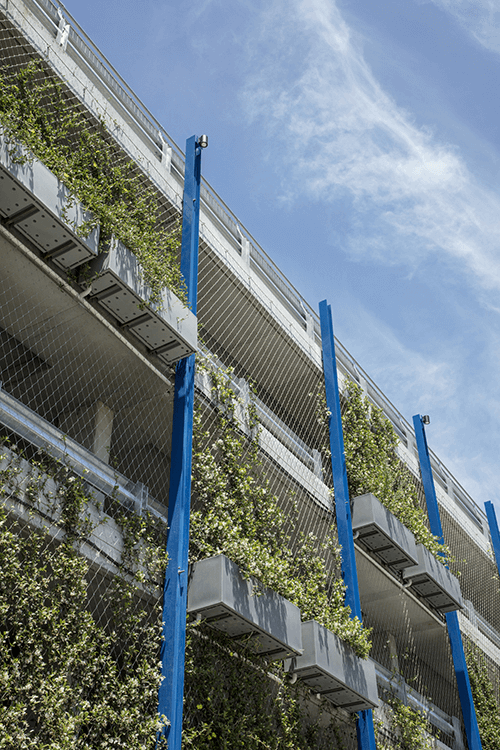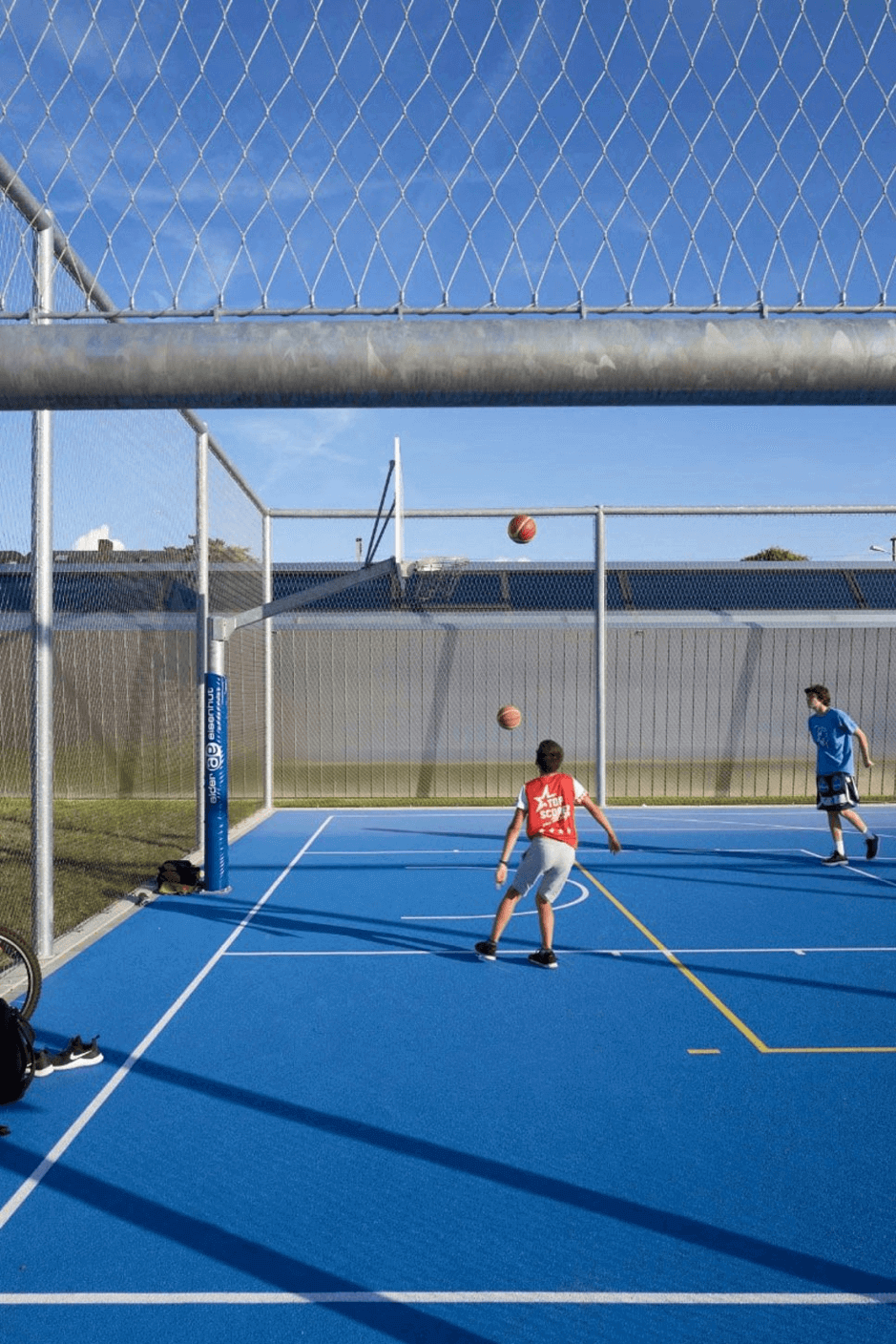Architectural netting is proving to be a very competitive material for construction and artistic projects.
The pre-formed, lightweight structure of Jakob’s Webnet mesh for example lends it to a wide variety of solutions – from facades and balustrades to safety nets and barriers.
Let’s look at why it’s worth considering architectural netting over other construction materials.
Why use Webnet architectural netting?
It has several key advantages over other building materials such as glass, plastic or perforated metal.
-
Speedier installation
Being a pre-formed and lightweight material (around 300g per square metre), Webnet is very quick to install once on-site. Installation can take a matter of days, even on large projects, as the sub-framing required for other materials (such as in perforated or panelled facades) is not needed.
-
Cost effective
Netting can be very cost effective in several ways. It doesn’t require traditional subframes, reducing the overall level of materials required. Faster installation means labour costs can be reduced. Ongoing maintenance and cleaning costs are low due to superior weather resistance.
-
Light in appearance
A is very light in appearance. It has a thin profile that allows it to all but disappear from view, and the fixings used are also small and inconspicuous. In addition, its open-weave formation allows natural light and air to enter into the structure.
-
Long lasting and low maintenance
Architectural netting needs very little in the way of maintenance as it is robust and weather resistant, unlike some other materials such as timber or plastic.
-
Flexible and adaptableIt can be custom-made to client specifications in terms of aperture openings, wire sizes and loadings, making it very adaptable for a wide variety of projects.
The material itself is also very malleable which means it can wrap around structures, be formed into curves, or be stretched in areas where required, in ways that more rigid materials may not be able to.
Five places Webnet architectural netting is used
1. Green facades
Architectural netting makes an excellent substrate for green facades, either alone or in conjunction with wire rope cables. It can also be used to secure planter boxes.
Examples:
- Anderson Road Apartments, Melbourne – in this project 1.5mm wire mesh screen acts as a trellis support system for the facade’s scrambling jasmine plants.
- Sydney Super Yacht Centre carpark – a 100mm aperture mesh screen provides fall protection on the carpark while also supporting over 90 planter boxes, creating a lush green wall effect.

2. Footbridges
It can create barriers and balustrades for pedestrian bridges that not only provide safety but add to the design of the construction.
An example is the Elizabeth Quay footbridge in Perth. For this project, Tensile created customised wire mesh for the balustrade which meets wind, load and safety requirements while following the twists and curves of the length of the bridge.
3. Home balustrades
Webnet can create staircase balustrades that are quite outstanding in looks while also blending into their surrounds.
Carlton House in Melbourne offers a typical example. The mesh balustrade has been painted white to blend in with the décor while allowing in natural light in line with the client’s desires.
4. Playgrounds
It can be ideal for playgrounds. Its malleability lends it to the often quirky shapes of playground equipment.
In the Wulaba playground in Sydney for example, brightly-painted mesh is used to wrap around the climbing tower in an almost fabric-like way.
5. Sports enclosures
Architectural netting is great for games enclosures and ball catchers in that it absorbs ball shocks and noise. The mesh can also be stretched in different directions to attain greater flexibility or rigidity where required.

Need more information?
Architectural netting is a very versatile and adaptable product that can be very cost-effective and project efficient. To discuss its potential for your next project, give our team a call.






































